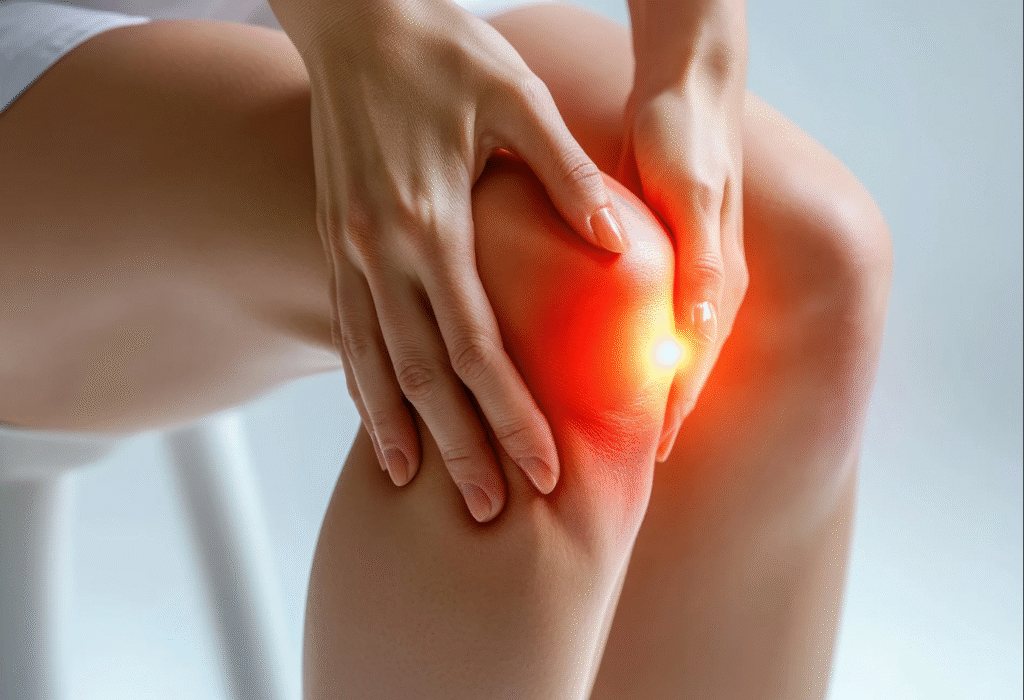Hemosiderin staining is a medical condition characterized by the brownish discoloration of the skin, often seen around the lower legs and ankles. It occurs when red blood cells break down and leave behind iron deposits called hemosiderin. While the condition itself is generally not dangerous, it can be a sign of underlying vascular issues or chronic venous insufficiency.
In this article, we will explore the causes, symptoms, diagnosis, and treatment options for hemosiderin staining, helping you understand what it means and how to manage it effectively.
What Is Hemosiderin Staining?
Hemosiderin staining refers to the discoloration of the skin caused by the accumulation of iron-containing pigment known as hemosiderin. This pigment is a byproduct of hemoglobin breakdown, which occurs when red blood cells leak out of blood vessels and degrade in the surrounding tissues.
This staining typically presents as rust-colored, reddish-brown, or dark brown patches on the skin, especially in the lower extremities such as the ankles or calves.
What Causes Hemosiderin Staining?
The primary cause of hemosiderin staining is chronic leakage of red blood cells into the skin and surrounding tissues. This is often associated with poor blood circulation, particularly in the veins. Below are some common underlying conditions that can lead to this staining:
1. Chronic Venous Insufficiency (CVI)
When the veins in the legs fail to return blood effectively to the heart, pressure builds up, causing red blood cells to leak out into the skin. Over time, these cells break down and release iron, which deposits as hemosiderin.
2. Varicose Veins
Twisted, enlarged veins increase venous pressure and contribute to red blood cell leakage, making varicose veins a common cause of hemosiderin staining.
3. Deep Vein Thrombosis (DVT)
A history of DVT can damage valves in the veins, leading to poor circulation and iron deposition.
4. Capillaritis
This is a benign condition where small capillaries leak red blood cells, resulting in pinpoint hemosiderin stains that may spread over time.
5. Skin Trauma or Surgery
Any injury or surgical procedure can damage blood vessels, leading to the local breakdown of red blood cells and staining.
6. Certain Medications
Medications like anticoagulants or corticosteroids may increase the risk of vessel fragility and leakage.
Symptoms of Hemosiderin Staining
The primary symptom is the visible discoloration of the skin. Other signs and associated symptoms can include:
Brown, bronze, or reddish-brown patches on the lower legs
Skin that becomes thin, dry, or itchy
Swelling (edema) in the legs or ankles
Pain or heaviness in the legs, especially after long periods of standing
Skin ulcers or open sores in severe cases
How Is Hemosiderin Staining Diagnosed?
A visual examination by a healthcare provider is often sufficient to diagnose hemosiderin staining. However, to understand the underlying cause, additional tests may be required:
Doppler Ultrasound: To check blood flow and vein health
Venous Doppler Studies: To assess for venous insufficiency or DVT
Skin Biopsy (rare): In uncertain or severe cases
Early diagnosis is key to preventing further complications like venous ulcers or skin infections.
Is Hemosiderin Staining Dangerous?
Hemosiderin staining itself is not harmful or painful. However, it is a sign of an underlying circulatory issue, which can become serious if left untreated. Chronic venous insufficiency, for example, can lead to leg ulcers, skin infections (cellulitis), and even deep vein thrombosis.
Therefore, treating the root cause is essential.
Treatment Options for Hemosiderin Staining
1. Compression Therapy
Wearing compression stockings helps reduce swelling, improve blood flow, and prevent further leakage of red blood cells.
2. Topical Treatments
While topical creams cannot remove iron deposits, some products containing retinoids or hydroquinone may help lighten the appearance of the skin over time.
3. Laser Therapy
Laser treatments, such as Nd:YAG or Q-switched lasers, can target pigmentation and improve the skin’s appearance. This is usually considered for cosmetic reasons and may require multiple sessions.
4. Treating the Underlying Condition
Addressing the root cause is vital:
Managing varicose veins (surgery, sclerotherapy)
Treating venous insufficiency with medications or procedures
Lifestyle changes like weight loss, exercise, and leg elevation
5. Healthy Lifestyle Choices
Improving circulation can prevent worsening of symptoms:
Avoid standing for long periods
Regular walking or leg exercises
Elevate your legs when sitting
Stay hydrated and maintain a healthy diet
Can Hemosiderin Staining Be Removed?
Complete removal of hemosiderin staining is challenging, especially if it has been present for a long time. However, early intervention can minimize the spread and improve skin appearance. Laser treatment offers the best results cosmetically, though it’s not always necessary for medical reasons.
Prevention Tips
Preventing hemosiderin staining involves maintaining healthy circulation and addressing vein problems early. Here are some practical tips:
Wear compression stockings regularly
Elevate legs to improve venous return
Avoid tight clothing around the waist and legs
Stay active, especially if you work at a desk or stand all day
Manage chronic conditions like diabetes or hypertension
When to See a Doctor
Consult a healthcare professional if you notice:
Sudden or spreading discoloration in your legs
Swelling, pain, or warmth in one leg
Open wounds that do not heal
Signs of infection (redness, warmth, pus)
Early treatment can prevent complications and improve both appearance and comfort.
Final Thoughts
Hemosiderin staining may appear harmless, but it’s often a signal of underlying venous disease or poor circulation. Identifying the cause, managing symptoms, and adopting a proactive lifestyle can help reduce discoloration and prevent further damage.
If you’re concerned about skin changes in your legs or ankles, especially if accompanied by swelling or discomfort, seek medical advice. The sooner it’s addressed, the better the outcome—both for your skin and your vascular health.


